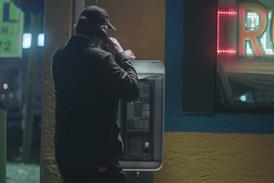Just as broadcasters are moving more of their output to high definition, requiring the production of high resolution masters, they are also demanding that the same content, or versions of it, be distributed by satellite, cable, podcast, DVD, internet and mobile in myriad additional resolutions.
As a result, facilities are under growing pressure to meet the technical requirements of this increasingly fragmented media business. Fortunately, the ability to reformat, repurpose, and create multiple copies or archive content is a natural extension of a facility's core expertise.
Ascent 142 chief technology officer Adrian Bull explains: “The new breed of distribution models such as IPTV, iPhone, games console or digital signage have specific requirements for file type, size and length, compression, metadata, interactivity, geographic restrictions and rights management. All of these are a facility's bread and butter.”
Catering for multiplatform delivery or creating draft versions for approval is a function of a facility's machine room, or of a separate encoding operation. Facilities like to present a picture in which all content is taken in once, manipulated, then outputted to the desired format. The reality, of course, is more complicated. Content is being repurposed at different resolutions and frame rates using new codecs, with different system requirements for each.
Case Study: The Green Balloon Club
Instead of dubbing out to tape, the facility might need to produce an HDCAM SR master for the broadcaster and a master file for the facility. There may be the need for: archive on Blu-ray disc; a Windows Media (WMV) or MPEG-4 file suitable for email distribution; then perhaps another file to meet the high-end D-Cinema standard (encoded in JPEG2000); and clients may also require files encoded in Flash or Silverlight for the web and versions for iTunes or BT Vision, iPlayer or Nokia phones.
A range of other portable broadcast devices such as the PSP are also coming on stream. “The problem for post is that encoding has become a black art,” says Root 6 managing director John Harris.
“There are a million different codecs and a million variable parameters within every codec. Clients just want something they can open on their desktop. They don't understand - or need to understand - the complexity that goes into producing it.”
Although encoding can be automated to produce volumes of copied files, the initial parameters need to be set manually. There's no magic button which can be pressed to produce video in the correct file size or bit-rate since each encode needs to be tuned to the specific video content.
“Encoding is very subjective,” says Prime Focus commercial director Daniel Sapiano. “You need expertise to decide how to output the best quality image to the correct file size depending on such things as movement, transitions or graphics.”
Kirsty Hunter, head of Lion Interactive, which creates and posts interactive versions of Lion TV's factual programming, also describes the process as a “black art”.
“Encoding is so variable,” she says. “Not only are there more and more formats and platforms but the ones that are already around tend to change their specifications every so often as new codecs emerge.”
The demand for replication in multiple formats is nothing new.
Facilities have long been familiar with creating versions for overseas markets cut to suit timings for commercial breaks, language versions, frame rates or aspect ratios. It's the post-producer's responsibility to keep abreast of technical changes, invest in the latest equipment and advise clients of the best way forward. “What has changed is that the process of delivering file-based media has become rather opaque,” says Sapiano. “Plus the fact there's an almost limitless number of ways a file could be encoded.”
“It's up to us to interpret what the client asks for,” says Concrete managing director David Cox. “They ask for a Quick Time the way people like to use the word Hoover. It's a catch-all phrase. But when you dig a little deeper you realise they don't want a Quick Time but an Avid file or WMV. Or they may need two of the same file but at different bit-rates [one master and one approval copy at a lower bit rate]. It is unreasonable to expect a client to have this knowledge but it's important to know what the destination is and work back from that.”
Digital signage is an emerging platform that presents its own unique headaches as advertisers gradually replace traditional print poster sites with networks of video-based digital panels. “Post has a dynamic role to play in repurposing print content for output to a wide range of digital formats,” says Prime Focus senior creative director Simon Huhtala. “Signage can be on the side of buses, at bus stops, on the Underground or on vast billboards all with different aspect ratios - TV-shaped, L-shaped, T-shaped, poster sized and so on.”
A recent Prime Focus job for Nokia required it to adapt a print campaign for delivery on digital escalator panels on the London Underground. “Elements were reused where possible and then animated to work seamlessly across groups of five portrait panels,” says Huhtala.
Lion Interactive is required to be similarly fleet of foot when it comes to repurposing content for different platforms. “We are delivering HD masters to BBC1 but Flash files for the web and a different file again for YouTube,” Hunter says about BBC production Britain from Above. “Because the web material requires a quicker turn-around we are cutting the online content from the raw rushes at the same time the TV material is being edited.”
Case Study: Britain From Above
Producers can ease the reversioning process by planning to shoot content applicable to different platforms at the start. “There's no point shooting full HD when you know the output is for the web,” says Somethin' Else managing director Steve Ackerman. “It's much more time and cost efficient to shoot at resolutions appropriate for the target platform, provided you are aware of this in pre-production.”
Somethin' Else is currently creating a cross-platform project for the BBC, shooting material for the linear channel in HD and simultaneously using lower-resolution HDV cameras to shoot an online companion piece. Even if the destination platform is not known, it is advisable to acquire at the maximum resolution possible and retain that as a master so new versions can be sliced and diced from it.
Says David Peto, managing director of facility Unit Post: “It's important to ensure that the asset or source file is free of errors and at the highest resolution - say 10-bit uncompressed.”
Nonetheless, as the number of formats facilities are required to produce multiplies, the time taken to quality-check grows and has become a bottleneck for most facilities. “You need to do a baseband video and audio check to make sure the levels are correct as well as a file-based check which analyses whether the encode or transcode is valid,” says Bull. “If you're transcoding large volumes there is neither the time nor budget to analyse every single file, so you perform spot checks.”
“There are massive implications on quality control (QC) for all file-based material and an increased requirement for workflow descriptions, service level agreements and automation,” warns Tektronix marketing manager Winfried Schultz. “Post houses which don't live up to the challenges of sophisticated QC should not attempt to go into the multi-format delivery market.”
Aside from the content itself, the facility also has to ensure that the file is labelled correctly so that anyone can locate it again. The main problem with labelling - or metadata, which is descriptive and factual information about content - is that there is no common standard.
“The problem is that nothing is the same,” says Red Bee head of digital media Lucy Amortegui. “Content might come in with different file specifications and different metadata schemas. Until the industry agrees a unified standard, the process is too complicated and arduous for media owners to manage themselves.”
One vital function of metadata and the media management systems that support it is the ability to track rights across different platforms.
A number of online sales systems are springing up in which platform owners can browse and licence programmes, have them re-encoded as necessary, then distributed to particular territories and platforms electronically.
Ascent Media has launched the Global Media Exchange to capitalise on this demand and uses Viia, Ascent's suite of digital media management systems, to produce different versions of the same content.
Says Bull: “Platform owners are using us to establish contact with rights holders in the first place. If a facility is big enough, as Ascent is, it can be well placed to take advantage of this growing market since we can archive, repurpose and redistribute content.”


























No comments yet